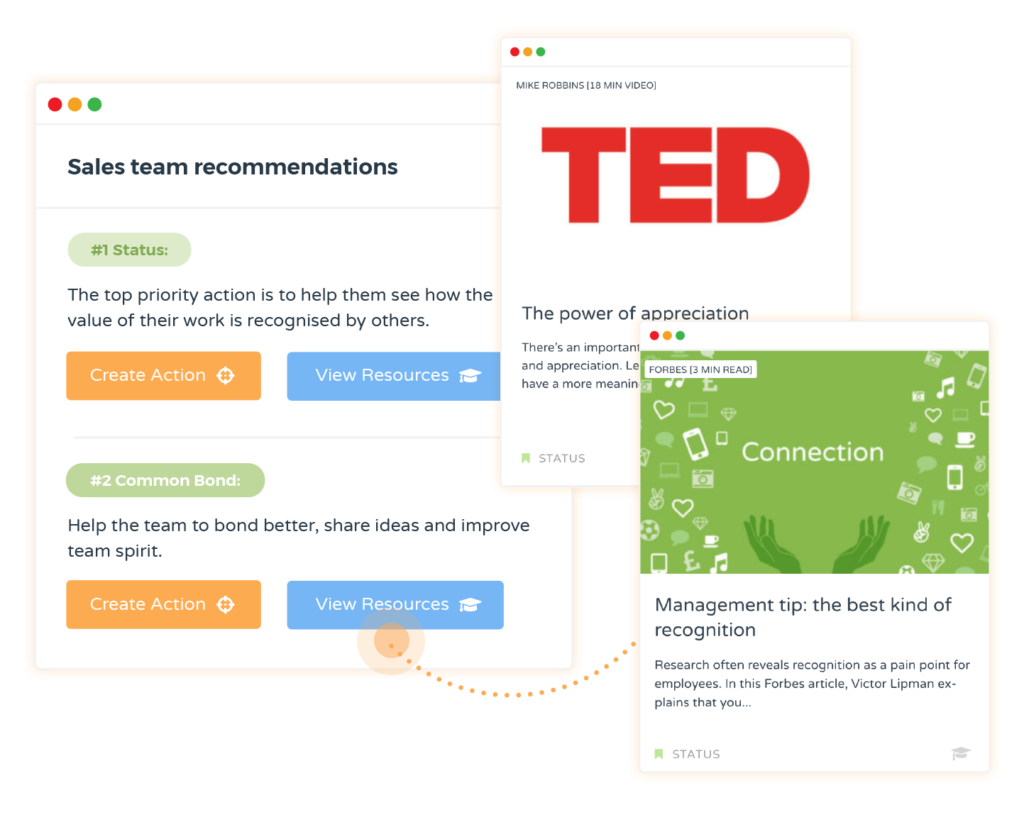When you think back to the best job you’ve ever had, you’ll likely be remembering the people who were around you. Inspiring teams, thoughtful and engaging managers and feeling connected to others are what most of us associate with our best workplace.
But sadly, these jobs often feel few and far between. Why? Because for the most part, line managers aren’t promoted for their people skills. Most people find themselves managing a team because they were high-performers in their former roles – not because they had exceptional people skills.
Chucking new managers into the deep end with limited resources and training can result in conflict, micro-management, unrealistic expectations and poor communication. Without the incentives or skills to focus on employee engagement this often results in unhappy and disengaged teams.
What is the current state of manager-employee relationships?
According to McKinsey research, employees agreed that “relationships with management” was the top factor when it came to job satisfaction, and following mental health, it was the second most important determinant of their overall wellbeing.
Research from the same study also found that the majority of employees believe their managers to be far from ideal, with 75% of participants claiming that the most stressful aspect of their job was their immediate boss.
In fact, a shocking 57% of employees have left a job because of their manager, with an additional 32% of employees seriously considering leaving because of their manager.
The truth is, that managers are rarely in a position to cultivate a psychologically safe working environment because they can’t or don’t know how. They are often swept off their feet and don’t have the time to focus on the ‘people’ aspect of their role. They also may not have received any formal training, and therefore aren’t equipped with the skills to have an impact. And lastly, they don’t know where to start and therefore never do, or at best dabble.
Here are a few ways you can strengthen your manager-employee relationships.
What can I do to fix it?
Transforming the entire conduct and approach of your management team is a challenge few HR leaders would envy. But creating an environment where your managers feel empowered and can engage their teams will drastically improve morale, engagement and performance.
The simplest route you can take is by embedding some basic principles, knowledge and skills that managers can use within your existing company structure and culture. No drastic overhauls or costly training days – just an evolution of your current way of working.
Step 1: Better communication

Ask your managers to consider:
- What questions do they ask their teams (if any)?
- What tone do they use?
- How do they get to the root cause of their people’s disengagement or dissatisfaction?
To create engaged, productive teams managers must understand what makes their people tick, what keeps them motivated, and what is missing that would enable them to perform better.
By asking these questions sincerely, and making it crystal clear that the purpose is to improve their people’s working lives, employees are much more likely to be receptive and honest with their feedback.
Step 2: Following up in a timely, consistent manner
Having the confidence to follow through is vital. This means that HR and upper management must empower managers to take action in their teams.
Waiting for weeks or even months to act on feedback can be very damaging for employee-manager relationships. After spending time opening up and discussing their challenges at work, employees need to see actions or results from their managers quickly.
Not only does this benefit the working relationship between the two, but it also makes a huge difference in performance if data and insights are acted upon fast. Your people may not feel the same way a few months down the road, rendering those conversations more harmful than helpful if no action is taken.
Step 3: Upskilling your managers
While asking the right questions and being quick to take action is vital, ensuring your managers have the right skills and knowledge to take action is one of the bigger challenges.
You may already have an L&D platform or internal learning resources for managers, but how do they know when they need them? Or which ones to use? This raises the issue of ‘Netflix syndrome’, where managers can spend hours scrolling through content unable to find something suitable for their needs.
It is therefore essential to build direct, easy to follow action plans filled with recommendations and curated learning resources. This means you can equip your managers with the knowledge and skills they need to build strong relationships with their people, and ultimately, high-performance teams.
Step 4: Making time for all of the above
By this point, you’re probably wondering how you and your managers can fit all of this in. Luckily, you don’t have to sit down and do it all yourself. Digital tools can help you evolve your current strategy from a time-consuming DIY approach to an instant ready-to-go tool kit.
Imagine a simple platform that allowed you and your managers to survey each team, identify people’s key concerns and vulnerabilities and instantly receive feedback packed with recommendations and learning resources to fix key issues.
“We found so much value in WeThrive’s post-survey action plans, which were filled with a wealth of resources, recommendations and training material that has been really useful and has provided us with tools to help develop our managers to get the best out of their people.” – Cheryl Conway, Head of HR, Volt.
WeThrive saves time, money and effort by doing the hard work for you, freeing managers up to focus on their work – knowing the ‘people’ aspect is taken care of. Want to learn more? Book a demo to see it in action or try the survey yourself and discover why 89% of clients improve engagement after their first survey.




